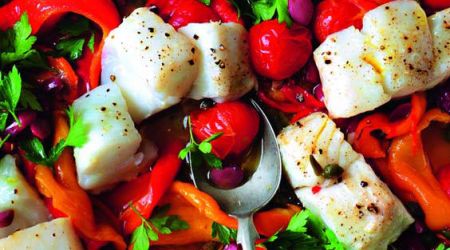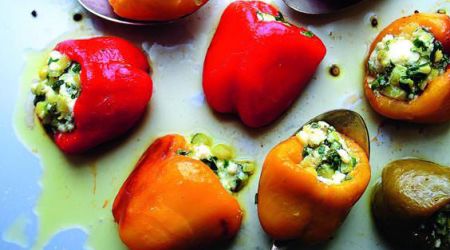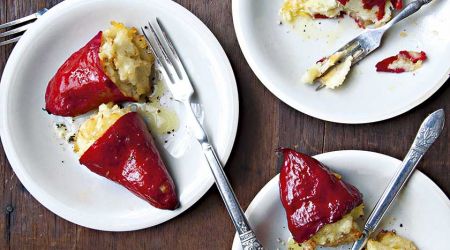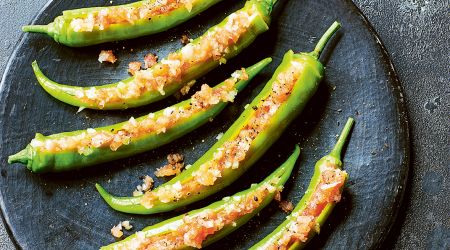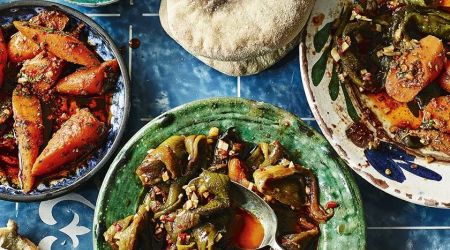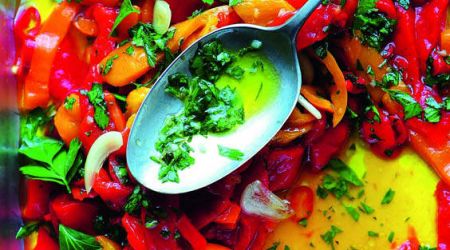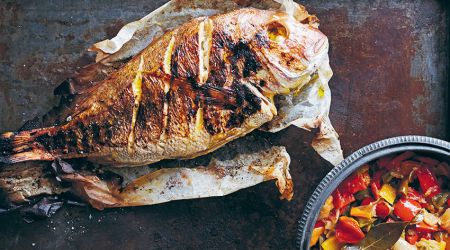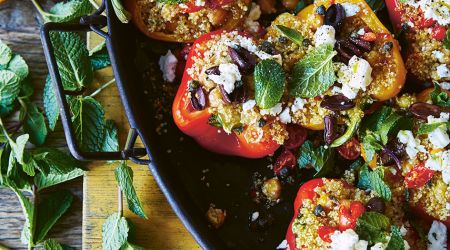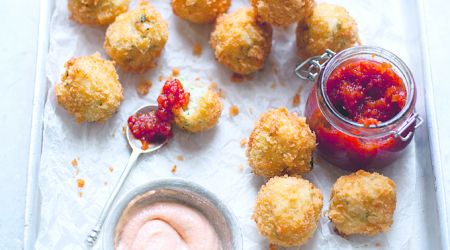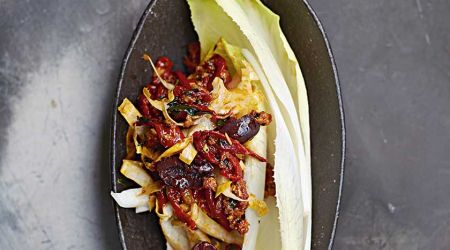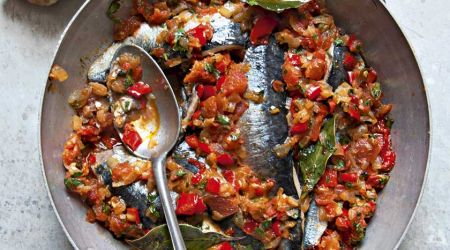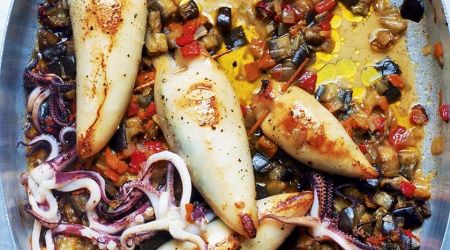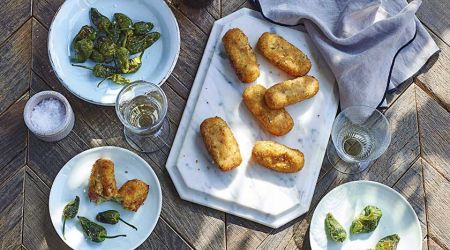Peppers
Not just good lookers: putting peppers and their hotter cousins chillies on the menu can actually raise your spirits; no wonder they’re addictive, says Clarissa Hyman
Fiesta-bright bell peppers are the mariachi bands of the fruit and veg counter. Fire-engine red, canary yellow, blazing orange and rainforest green, they infuse any dish with party spirit. The trafficlight packs are the first rung on the heat ladder to a sweet sun-ripened heaven – or a spicy chilli inferno.
Glossy peppers give vibrancy to Mediterranean cooking. They are among the most versatile of kitchen ingredients. They can be fried, roasted, baked or grilled, and can also be eaten raw, diced and sliced, although some find that green bell peppers are bitter. Smoky Italian pepper salads marinated in oil are delicious, the skins grilled until charred then rubbed off, a simple act of kitchen magic that transforms their texture and flavour. Cooked and puréed, they release lightly honeyed juices that create vibrant soups and sauces. Ratatouille, caponata, peperonata and other southern dishes depend on sweet peppers, and their squarish shape makes them ideal for stuffing with rice and meat.
Tapering sweet peppers, such as the ramiro, also have a particularly fine flavour and are now more widely available than ever, while grow-it-yourself enthusiasts can cultivate bell peppers under cover: the unicorn has the classic bell shape, and the jingle bells, despite its wintry name, yields mini-fruit throughout the summer and autumn.
Both peppers and chillies are at different ends of the capsicum family of plants that originate in Central and South America. These pungent fruits (not vegetables) will add kick-ass spice to bland dishes, and when Spanish and Portuguese explorers brought them to Europe in the 1490s they became hugely popular, such was the desire to find a substitute for costly peppercorns. In Britain they were regarded as an exotic rarity: the word ‘chilli’, in particular, gave rise to considerable misunderstanding, as Becky Sharp found to her cost in Thackeray’s Vanity Fair, set in the early 19th-century, when she blithely popped one in her mouth assuming it to be cool and refreshing. Big mistake.
Once exported around the world, they were integrated into national cuisines. It is hard to imagine a curry without their spark, a North African harissa or Provençale rouille without their zing, a Jamaican jerk chicken without a chilli kick. This ubiquity stems from their diversity. Peppers and chillies come in many shades, including chocolate-brown and purple, and range in size, texture and shape – and, of course, heat intensity. The rule is the smaller, the hotter. Colour is no guide when it comes to packing a punch; red chillies are not necessarily hotter than green ones. Red, in both peppers and chillies, simply indicates ripeness and a greater sugar content. Those that look mild can be blistering.
Their heat is measured in Scoville units; sweet bell peppers score zero, while bird’s eye and tabasco chillies raise the temperature past 30,000. But peppers don’t need to be hot, nor do you have to undergo trial by fire to eat them. Appreciate, rather, the warmth and spice they add to dishes, their tropical flavour, zesty accent or rich complexity. Add thin-skinned Anaheims to stews and salsas, or stuff sweet red romanos with meat or cheese. The mild poblano, small and dark green, is excellent for roasting or grilling whole.
One of the hottest finds of the year has been the jalapeño poppers at El Camion in Soho. These crisply coated, deep-fried, cream cheese-stuffed little peppers have become a signature snack for the bright young tortilla chips who salsa down to this trendy subterranean Mexican cantina. Crunchy and tender, the filling erupts into your mouth at the first bite.
El Camion’s snack is just the latest discovery in the world of peppers, which can still yield surprises more than 500 years after these versatile fruits reached Europe. Peppers will continue to entice culinary adventurers to dry, grind, smoke, stuff or pickle them in pursuit of new flavours, and draw the brave (or foolhardy) to the fiery summit of the Scoville scale.

Recipes
Get Premium access to all the latest content online
Subscribe and view full print editions online... Subscribe

